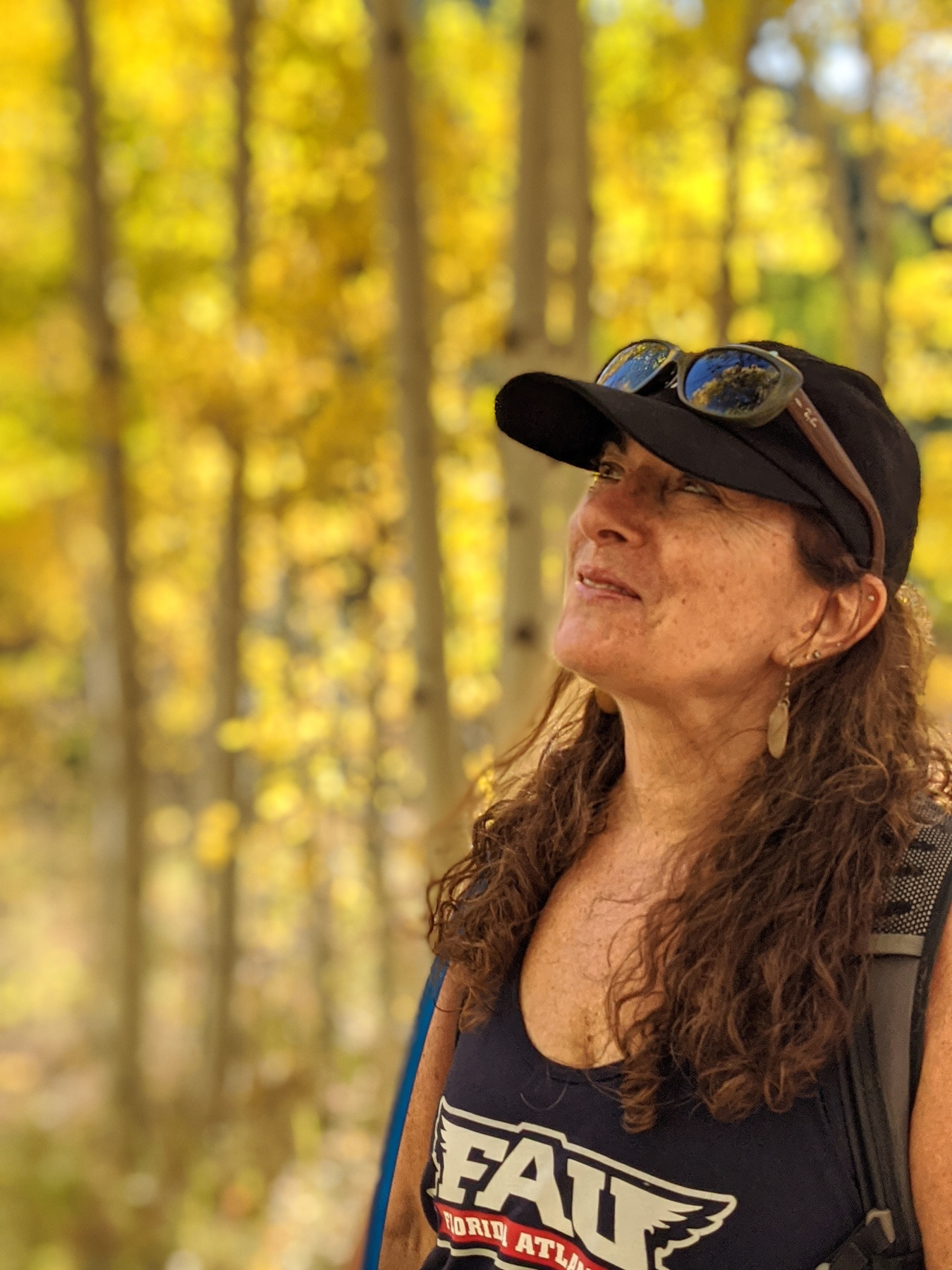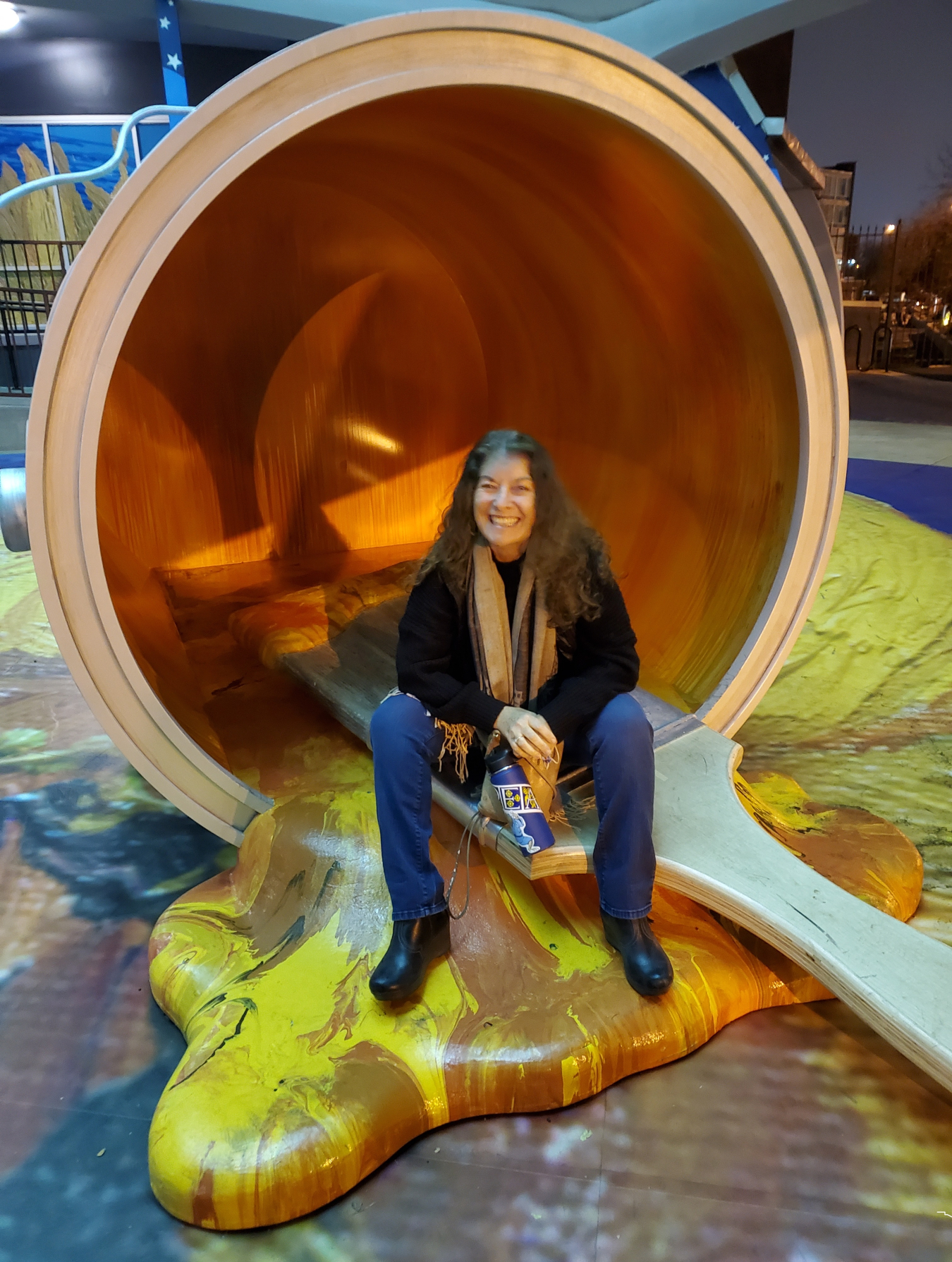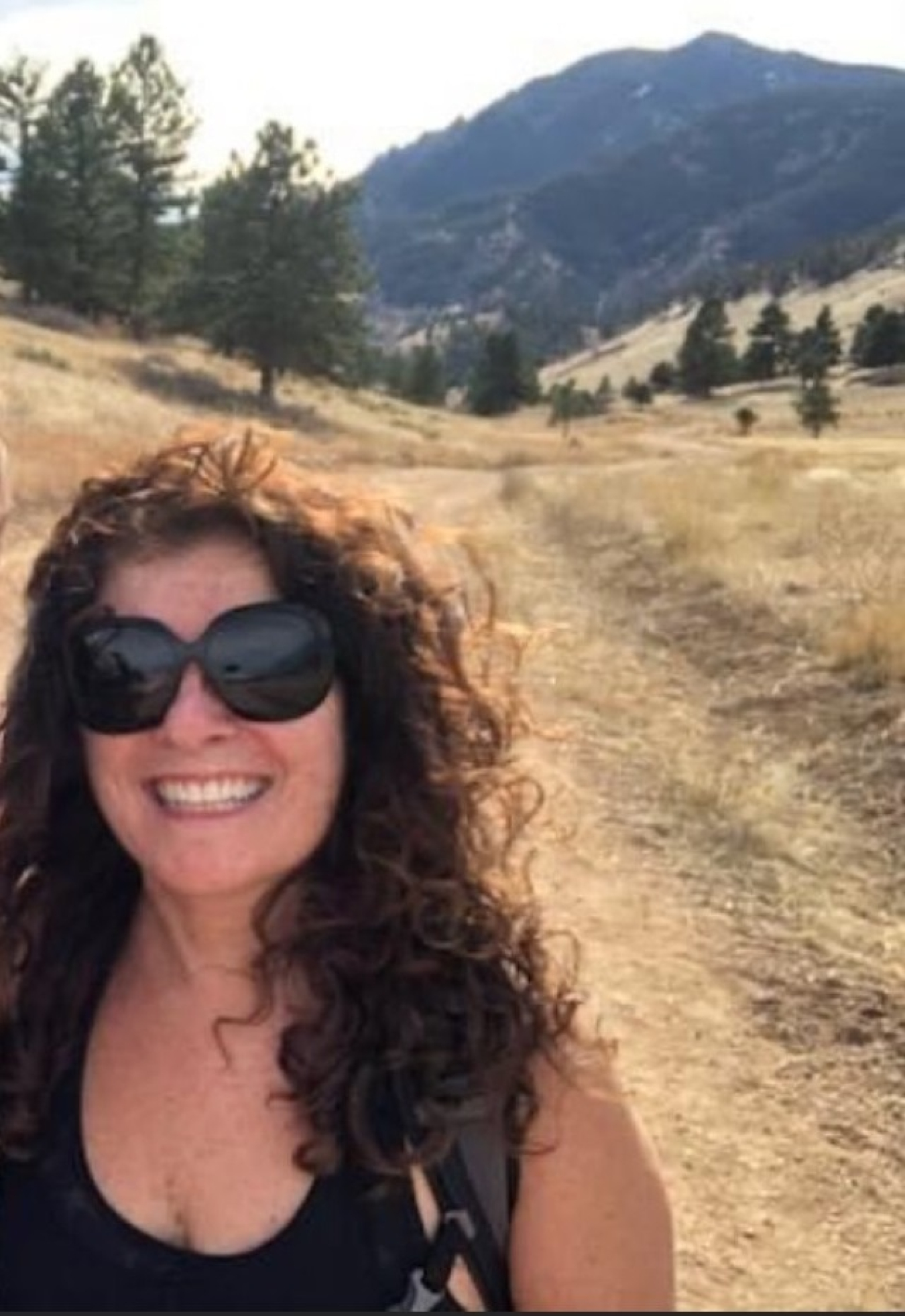Diana Kamenel Trettin has made significant contributions to LM since joining in 2022
March 29, 2024
In honor of Women’s History Month, U.S. Department of Energy (DOE) Office of Legacy Management (LM) Beneficial Reuse Program Manager Diana Kamenel Trettin shared her experiences about working in a science, technology, engineering, and math career as well as her hopes for the future of the beneficial reuse program.
After graduating from the University of Miami in Coral Gables, Florida, Kamenel Trettin began her career in environmental studies, sustainability, remediation, and construction management. Before LM, she was a renewable energy specialist for the National Park Service.
“I have always been interested in science and finding ways to help create a better world regarding clean air, clean water, and clean lands,” Kamenel Trettin said. “I started as a marine biology major, but upon taking classes in geology, I really fell in love with that science. One thing led to another, and I became an environmental scientist.”
During her time with NPS, Kamenel Trettin worked with LM when the Manhattan Project Hanford site in Washington was transferring to NPS as a national park. Because of her work during that time and her knowledge of beneficial reuse, sustainability, environmental science, and the National Environmental Policy Act, LM hired her in 2022.

In her day-to-day work at LM, Kamenel Trettin and her team are responsible for sustainably managing and optimizing land and asset use. The Beneficial Reuse team’s goal is to use DOE legacy sites and property in the most beneficial way, consistent with LM’s mission to consider environmentally sound land uses for properties in its custody. Where possible, LM makes lands and facilities available for government, public, and private use, aligning with sustainability principles and good land management practices.
“The Beneficial Reuse team and I work closely with both internal and external organizations to develop beneficial reuse opportunities. Collaboration can involve a wide range of external and internal working relationships. Reuse activities can include supporting the LM site itself or adjacent land uses on properties that are owned or managed by multiple entities. These uses include wildlife refuges and corridors, renewable energy support, pollinator studies and habitats, educational centers, parks, and other community uses,” Kamenel Trettin said.
“Most of my day to day involves performing research on various properties and beneficial reuse opportunities, attending meetings and conferences, writing papers, and presenting at conferences and workshops,” she said.
While the Beneficial Reuse team and its purpose have been part of LM since it began in 2003, Kamenel Trettin made it her mission to make beneficial reuse and the team a more visible part of LM’s story.
“The team is currently making sure that our beneficial reuse projects and opportunities are publicly promoted on social media outlets like Facebook and LinkedIn. It is very important to get the word out regarding the amazing work LM and the beneficial reuse team can accomplish, whether that is winning numerous (U.S. Environmental Protection Agency) awards of excellence or the Phoenix Award for brownfields remediation,” Kamenel Trettin said.
She added, “LM has been honored with these awards for creating sites that go above and beyond in environmental conservation, renewable energy, cultural resources, and more. This work has been ongoing since the inception of LM; however, we are now making sure LM is publicly recognized for it. We also are working hard to ensure all LM sites that have potential for beneficial reuse can commit to creating that beneficial reuse.”
In addition to the many EPA awards and the Phoenix award for brownfields remediation, LM’s Beneficial Reuse team received the 2023 Secretary of Energy Achievement Award.
“The team was recognized for their extraordinary dedication to getting our geographically dispersed sites back into reuse in a safe, efficient, and productive manner while ensuring the history of innovations made during that era, and the important sacrifices of the workers and communities impacted, remain enduring memories for many generations to come. This award was for the team effort of more than 60 people over years of continued service. It was an honor for all of us,” Kamenel Trettin said.

Kamenel Trettin’s leadership and dedication to her team and her career has not gone unnoticed.
“Diana’s enthusiasm for conservation is contagious, she inspires our whole team to think outside the box when it comes to determining what is possible,” said LM Strategic Partner Beneficial Reuse Lead Vail Nazzaro. “Diana’s enthusiasm for beneficial reuse is inspiring. She is constantly championing efforts to improve the program and do more.”
In fact, Kamenel Trettin’s favorite part of working for LM is doing great work with her team.
“I truly appreciate my team. We could not begin to accomplish this work without the help of so many others across the LM family. The best part of working for LM is the knowledge that we are doing great work. Our job is to take legacy sites from World War II and the Cold War that had been contaminated with nuclear wastes and remediated to a level that allows for long-term surveillance and monitoring and make them usable and pretty.
“Once we get to that point, we can utilize various forms of beneficial reuse to make the sites viable for other uses, and create sites that benefit the community and the environment,” Kamenel Trettin said. “I wake up in the morning knowing that what I am going to do that day matters. And that is a great way to wake up.”
As for the future of her team and LM, Kamenel Trettin added, “We are looking forward to having the ability to enhance more sites with beneficial reuse opportunities and coming up with new types of reuses to continually improve these sites. We are currently looking at additional pollinator studies, more use of renewable energy, additional collaborations with other agencies, and the possible creation of some new trail networks.”
When she isn’t busy creating trails and exploring new beneficial reuse opportunities at LM sites, Kamenel Trettin unwinds by hiking with her puppy, reading, and traveling domestically and internationally.

